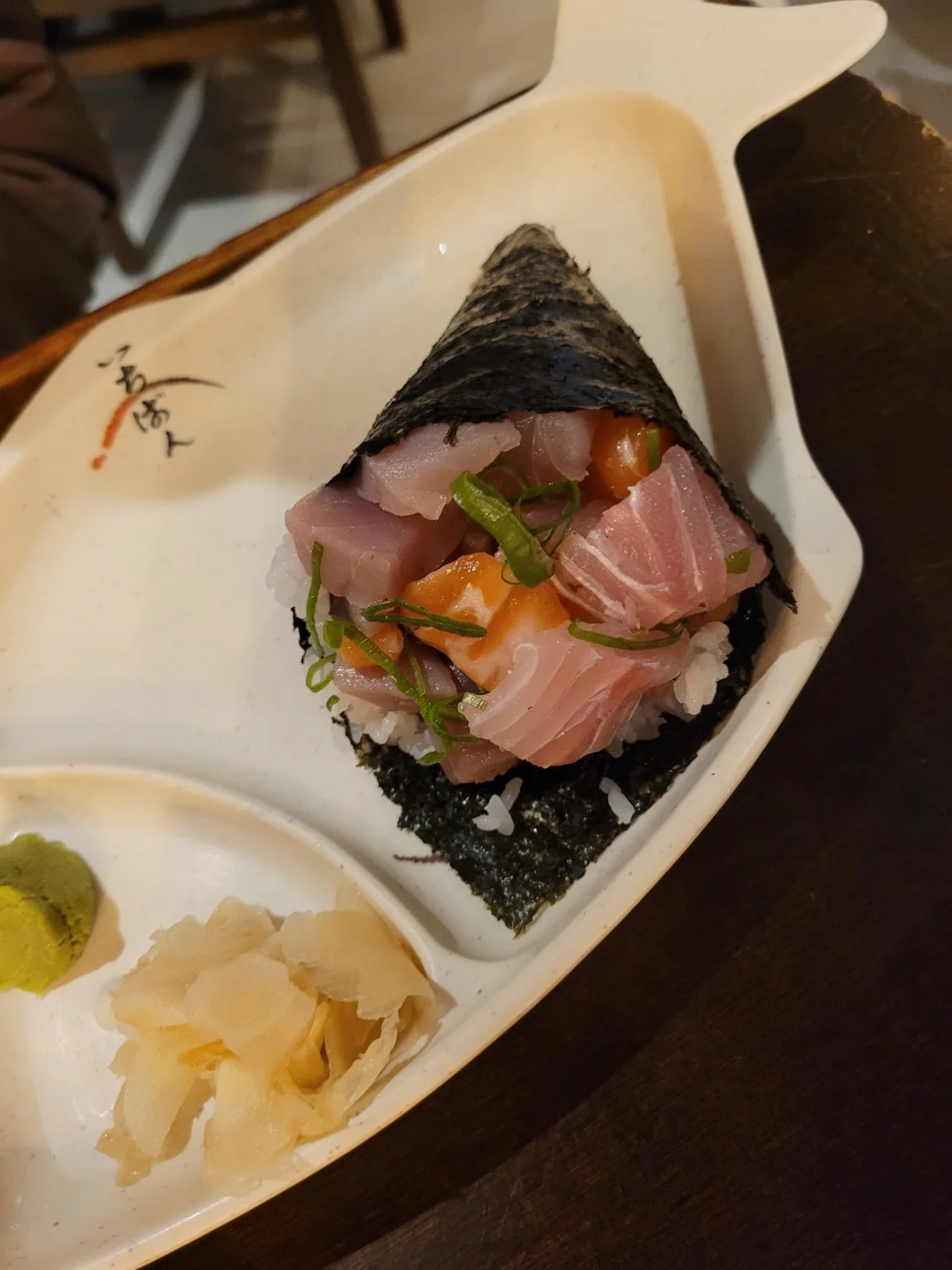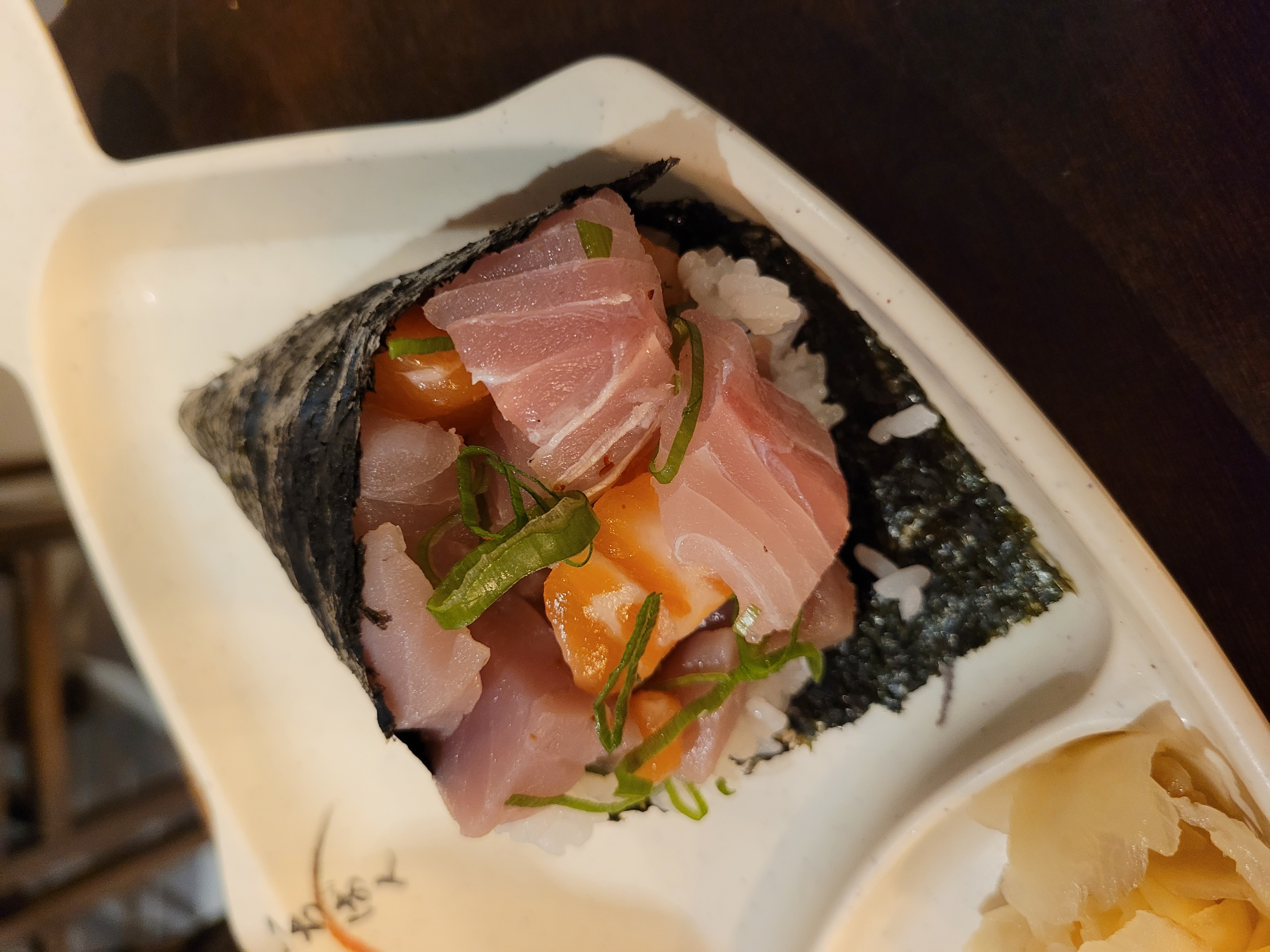

Temaki Pantai
Temaki Salmao, Atum, Peixe Branco, arroz, cream-cheese, gengibre e cebolinha
Nutrition Facts
* The % Daily Value (DV) tells you how much a nutrient in a serving of food contributes to a daily diet. 2,000 calories a day is used for general nutrition advice.
Pantai Sushi Oriental Experience
Temaki, a type of hand-rolled sushi, originated in Japan but has been heavily adapted and popularized in Brazil, often with significant variations in fillings and flavors to suit local tastes. The inclusion of cream cheese, a common ingredient in Brazilian-style sushi, is a notable departure from traditional Japanese preparations.
In Brazil, Temaki is a popular and often casual dining option, widely available in sushi restaurants and as a takeaway food. It's often seen as a more accessible and fun way to enjoy sushi compared to more formal presentations.
Brazilian Adaptation
The inclusion of cream cheese and other non-traditional ingredients like fruits is a hallmark of Brazilian sushi and reflects a willingness to adapt foreign cuisines to local palates.
Social Dining
Temaki is often enjoyed in social settings, with friends or family, due to its easy-to-eat format and variety of fillings.
Beach Culture
The name 'Pantai' which means 'beach' in Malay/Indonesian, hints that this dish may be designed to evoke feelings and freshness of the beach.
This Temaki is a fusion of fresh seafood and creamy textures, balanced with tangy and slightly spicy elements.
The dominant flavor comes from the fresh fish: *Salmao* (Salmon) provides a rich, fatty flavor; *Atum* (Tuna) offers a more robust, meaty taste; and *Peixe Branco* (White Fish) delivers a mild and delicate profile. The *arroz* (rice), seasoned with vinegar, provides a slightly sweet and acidic base. *Cream cheese* adds a creamy richness that contrasts with the fish and rice. *Gengibre* (ginger) provides a spicy and cleansing element, while *cebolinha* (chives or scallions) adds a mild oniony freshness.
Freshness is Key
Ensure the fish is of the highest quality and extremely fresh. This is crucial for both flavor and safety.
Rice Temperature
The sushi rice should be at room temperature or slightly warm, not hot or cold, for optimal texture and flavor.
Balancing Flavors
Adjust the amount of cream cheese and ginger to your personal preference to achieve the right balance of creamy, spicy, and fresh flavors.
Eat Immediately
Temaki is best enjoyed immediately after preparation, as the nori (seaweed) can become soggy over time.
Explore additional Japanese dishes and restaurants
Explore JapaneseDiscover top dining spots and culinary experiences in Itapema.
Explore ItapemaLearn more about the food culture, restaurant scene, and culinary heritage of Brazil.
Explore Brazil